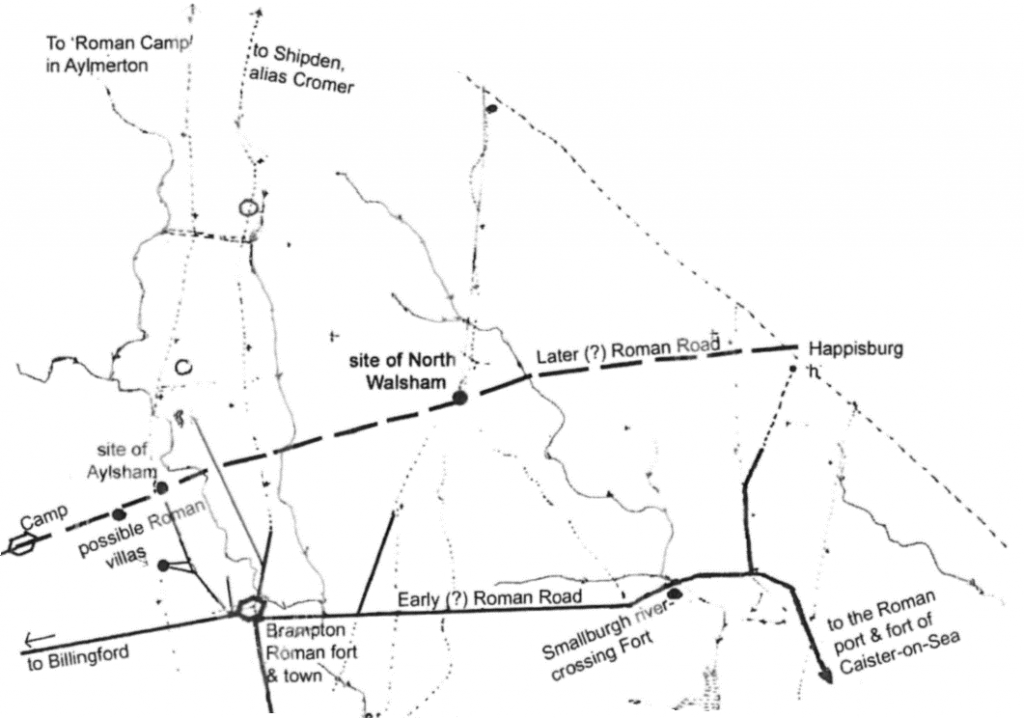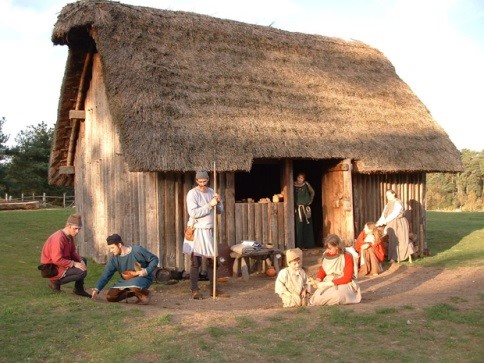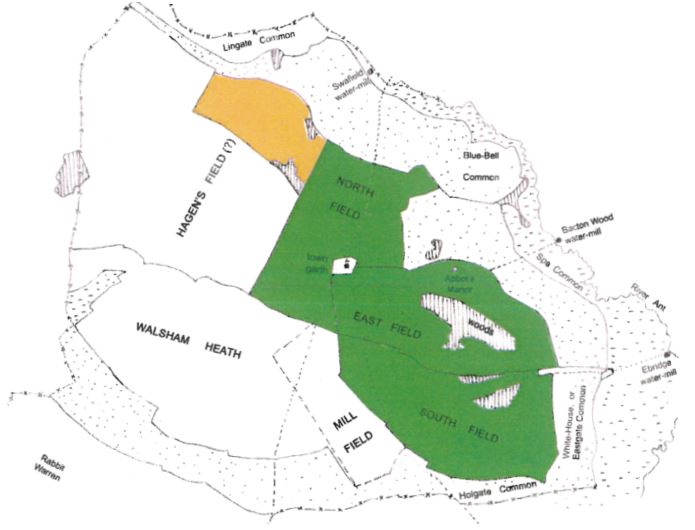Settlement before that time was proven with the discovery in 1844 of Roman remains on the parish border with Felmingham, a site close to the line of a Roman road which connected Burgh Camp near Great Yarmouth to the great fort at Brancaster on the northwest Norfolk coast.

The Anglo-Saxon village of ‘Walessam-eska’ is the first recorded settlement in the area, with its name appearing as ‘Walsam’ in the Domesday Book survey of 1086.
The derivation of the name itself tells us that it was a small group of dwellings (Anglo-Saxon: ham) belonging to the Danish ‘Waelsing’ family. The name Waels features in the ancient Anglo-Saxon poem ‘Beowulf’, written about a sixth century warrior who slayed Grendel, serpent of the Fens. Waels was the father of Sigemund the Waelsing who slayed a hoard keeping dragon.
Other settlements of these same families are found locally at Walsingham, Wells, South Walsham and Walsham le Willows. The appearance of the Anglo-Saxon ‘ham’ tells us that the family settled here sometime in the sixth century.

With the coming of Christianity to East Anglia, the village was provided with a church, and to that church a portion of land and a priest.
When the Vikings later raided the shores of eastern England many villages fell to their hands, including Walsam. It is recorded that during the reign of King Canute, a Norseman named Skiotr gave the village of Walsam along with its church and estates to the Abbey of Saint Benet at Holme, then sited on an island in the Bure marshes near Horning. This Abbey was to become one of the richest Benedictine Monasteries in the land. Much of this wealth was obtained from Walsam, being its principal and most prosperous holding. The Abbot of Saint Benet’s as Lord of the Manor held the rights to all tithes, and as the weaving industry of the area flourished these tithes became lucrative.
The Abbey Church of Saint Benet along with the Parish Church of North Walsham were both enlarged on a grand scale in the fourteenth century using this great wealth. As a result the town can boast the largest church in Norfolk that has always been solely a parish church. (Both King’s Lynn Minster and Great Yarmouth Minster are larger buildings but were originally built as priory churches.)
Early records mention the town as Walsham Market and as Walsham, the ‘North’ being added within the last few hundred years.
The Domesday Book tells us that a church existed in North Walsham and that it belonged to Saint Benet’s Abbey. Part of the tower of this ancient church still exists today, being the oldest building in the town at well over a thousand years old. It was incorporated into the present church building and stands to the immediate north of the present tower ruin.
Most of the early town was built of wood and thatched with reed that grew in the water meadows beside the River Ant on the east side of the town.
Walsham in the Domesday Book
In the great survey of Norman England in 1086, Walsham had a population of 71 households, probably around 350 people. Its Lord was the Abbey of St Benet of Holme and Walsham was worth £5 a year to the abbey.
It was a totally farming-based economy. Its arable land was measured by its plough teams, two belonging to the abbey and 17.5 other plough teams each of 8 oxen.
There were also 12 acres of meadow, 116 pigs grazing the woodland, one (water) mill.
The ploughlands were in three fields; Southfield, Millfield and Northfield, and were subdivided into strips allotted to the townsfolk.
This was a system common throughout the country, with one field sown in wheat, another in beans, with barley for brewing, and the third left fallow for sheep to re-fertilize the land. Year by year this system was rotated so that all fields had equal usage.
The outskirts of the town were well wooded and provided rough grazing for cattle and pigs.
